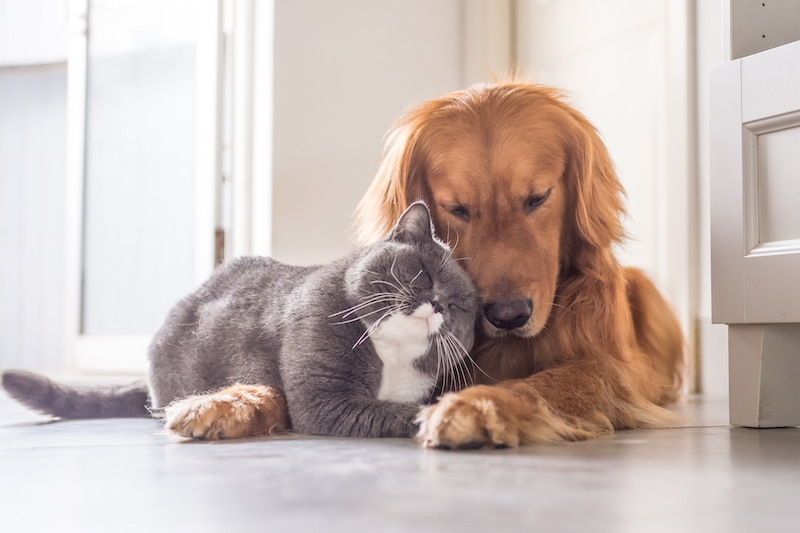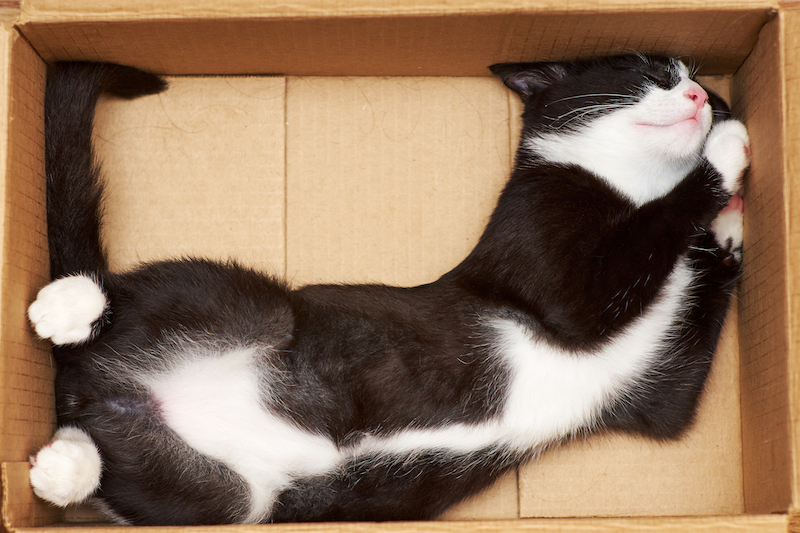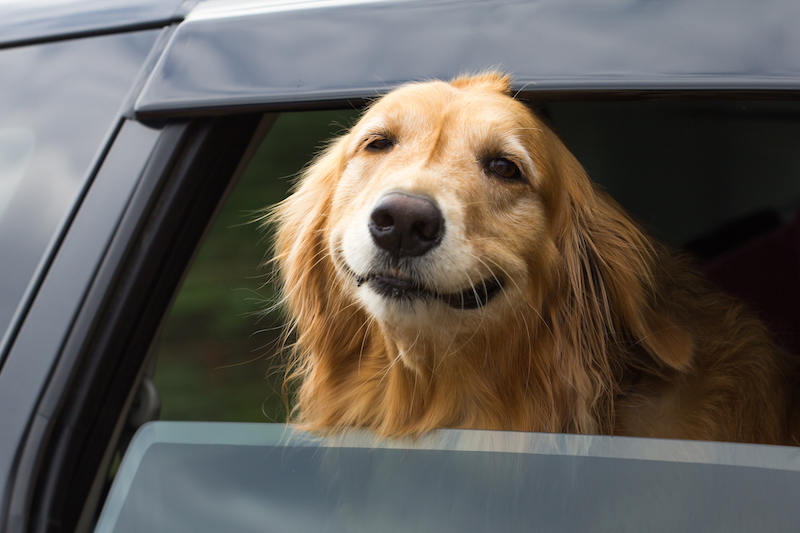Moving is never easy, but having a cat or dog along for the ride doesn’t make it any simpler. So how can you make the experience as stress-free as possible for your furry friend?
If only you could explain what’s going on to your pets, and tell them that they’ll soon love their new home just as much as their old one. Until you find a certified pet whisperer, you’ll have to use other tactics.

We’ve gathered helpful tips to make your move as painless as possible—for both you and your pet.
Before you move
Rules & laws to stay on top of
If you’re moving to a different state, county, or municipality, check the local pet regulations. Some places have rules about dogs wearing muzzles and leashes in public areas. Some won’t even allow residents to own certain breeds of dog.
Depending on how far you’re moving, you’ll also need to check the rules about moving pets across state or county lines. Some states require health checks at the state border, and many expect to see your pet’s health certificate.
If you’re moving outside of the contiguous US, you’ll likely need to follow quite strict rules. For example, Hawaii has complicated pet travel restrictions, and if you don’t meet them, your pet might have to spend weeks in kennel quarantine.
The Animal Control Commission for your new neighborhood will have all the information you need about local pet regulations, pet licensing, and travel rules.
How to prepare your pets for the move
To keep your pet as calm and happy as possible, it’s best to stick to their regular routine right up until moving day.
There’s some disagreement among pet parents as to what to do with moving boxes before you start packing up your belongings.

Some suggest getting the boxes out well in advance, giving your cat or dog the chance to sniff and explore them. Others say you should wait until you’re really ready to pack, so that your pet doesn’t get the jitters. Every animal is different—and you know your fur fam best—so make the call that feels right for you.
Either way, your pet’s favorite toys, blanket, food and water bowls, litter tray, and other familiar items should be the last things you pack. It’s also a good idea to leave their pet carrier or crate open around the house for a few days before you move, so that they can make a positive association with it.
If the new home you’re moving to is nearby, take your dog there for a walk so that they can acclimate to their surroundings (and all the new smells they’ll soon be discovering).
ID tags and medical stuff
Getting your pet ready to move includes updating their collar tags. Make sure the tags have up- to-date contact details, including your cell phone number and email address, in case your pet runs away in all the confusion. It’s smart to microchip your dog or cat before the move, because they are more likely to take off when confronted by an unfamiliar place.
You’ll also want to visit your vet for a checkup a short time before moving day. Make sure that all your pet’s vaccinations are up to date and that you have their vaccination certificates.
If you’re moving a long distance, you’ll probably need a health certificate. This is a certificate signed by your vet which describes your pet and confirms that they are healthy and free from infectious diseases. Health certificates are only valid for a limited amount of time—sometimes as brief as 10 days—so keep that in mind.
On moving day itself
The best tactics for keeping your fur fam relaxed during a move depend on where exactly you’re moving to, and whether a long drive or flight is part of the equation.
If you’re moving to a new space nearby
On moving day itself, keep your pet out the way as much as possible. If you can, send your pet to stay with a friend or family member who they already know, or to a cat or doggy daycare—before the movers arrive. That way, they won’t get unsettled by all the activity, and you’ll be able to focus on your own logistics.
If you’re driving to a new house some distance away
If you have a long – or even medium-length road trip ahead of you, use a pet-friendly route planner to optimize your journey. It’s also a good idea to take your pet on shorter drives in advance of moving, to get them used to the experience.
Make sure to allow plenty of stops for your pet to get some exercise, go to the toilet, and eat and drink. Although it can be tricky, try to stick to your pet’s normal schedule for meals and toilet breaks as much as you can.

Remember that it’s unfair to your pet (and also illegal in many states) to leave your pet in the car alone. Eat in your car with them at drive-thru stops, or look up pet-friendly restaurants. If you’ll be driving for multiple days, book pet-friendly hotels ahead of time.
Make sure that your pet will be safe and comfortable during the drive. Use a pet crate, pet carrier, or pet seatbelt, and place your pet on the back seat so there isn’t a risk that they could interfere with your driving. (Pets only make good drivers in Pixar movies.)
If possible, have a family member sit next to them to keep them company. If your pet has to sit in the front seat, remember to turn off the passenger-side airbag.
To calm your cat or dog down while driving, you might consider certain helpful products. That might include spraying the carrier with calming catnip spray for cats, or getting a collar that releases calming scents. If your pet is nervy or anxious, you might want to use a pet-approved CBD chewable (but don’t introduce these for first time on moving day, because you don’t want any surprises).
If you’re moving with a dog, make sure to attach their leash and hold tight to the end of it before opening the door. Many dogs are jumpy and scared on car rides, and there’s a risk they’ll bolt as soon as the door opens.
If you’re flying to your new address
If you’re flying with your pet, make sure to book your tickets as far in advance as possible, because each flight has only a limited number of spaces for pets.
Check which documents you’ll need to fly with a pet, gather them all in advance, and keep them in a safe place until moving day.
Cats, small dogs, and most medium-sized dogs that fit into pet carriers can usually travel with you in the cabin. Flying in the cargo hold can be stressful and upsetting for pets, so if your pet is too large to fly in the cabin, you might prefer to arrange ground transportation for them with a dedicated pet relocation company.
How can you make flying a breeze for your pet? Avoid traveling at peak times and keep the number of transfers you make to a minimum. Most vets don’t recommend sedating a pet before travel, but ask your vet about options if your pet is prone to anxiety.
Arriving in your new home
Letting your cat or dog get settled
If possible, unpack those favorite toys, blanket and bed, litter box, and other familiar items before you bring your pet into your new home.
Create a little, cozy oasis in one room so that they can get used to a small area before you invite them to explore the rest of the house. This also lets you focus on unpacking without having a furry nose poking into your business.
Stick to what they know
Like many humans, pets don’t like change. Keep to their old routine as much as you can in the new environment. Feed them and walk them at the times they’re accustomed to each day.
Be aware that every pet needs an adjustment period after moving, and they are more likely to run away and get lost during that time. Keep an eye out, and update their ID tags and microchip information if you didn’t already.
If your cat is an indoor/outdoor feline, they’ll need time to adjust to their new digs before exploring the wider neighborhood. Keep them inside for about 2 weeks before letting them go on the prowl.
Before we go…
Whether you’re moving across the country or around the corner, there are plenty of things you can do to make the move easier for your furry friend.
And while you’ve got your cat or dog’s best interests in mind, consider protecting their health and livelihood as well!
Lemonade Pet provides affordable, customizable insurance for your furry loved one, and the process is simple and intuitive. Check it out by clicking the pink button below.




